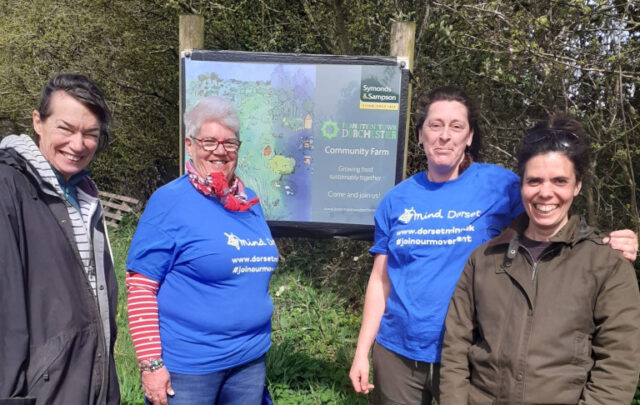Community resilience is often thought of in concrete terms: growing local food, using sustainable energy, riding bikes and using alternative transit, and lowering carbon emissions.
All of this is tremendously important. But resilience is also a question of who, as well as what. It is possible to imagine a future full of gated neighborhoods that are highly resilient, where wealthy people live in carbon-neutral communities complete with bikes, electric cars, mini-farms, windmills, and solar panels.

Guava or Guayaba – Learn More About Your Neighbors’ Fruits
It’s also clear that as communities build resilient “amenities,” such as community gardens, green space, walkable business districts, farmers markets, and bike paths, they become more desirable places to live – and real estate prices rise. Tragically, the folks who worked so hard to improve their communities, and make them resilient, get priced out.
This is how gentrification systematically undermines attempts to create resilience for all. It’s why the future scenario of “gated resilience” is one we must seriously consider and work to prevent. We must always ask: who is community resilience really for?
Él Platanero and Hi-Lo
According to Jamaica Plain New Economy Transition (JP NET) organizer Carlos Espinoza-Toro, “Gentrification is a structural problem embedded into our financial and economic system.”
But despite its structural nature, people often approach gentrification as if it was a matter of individual choice. As a neighborhood changes and gentrifies, hurtful fights can break out. “New” and “old” neighbors often battle over potent symbols–such as murals and supermarkets. But it is possible to navigate these conflicts with skill and care, lessening the impact, and uniting the community rather than dividing it. (For an example, see this story about Beth Roy, a mediator who helped a community navigate gentrification in the San Francisco area.)
Take, for example, Tropical Foods Supermarket–or “Él Platanero”–in Dudley Square, Boston. Jeanette’s father, a native of Mexico, has shopped at Él Platanero for many years. He found a sense of community there, where everyone understood one another. Él Platanero was a place where he could connect with people in his native language. In 2014 he learned of the supermarket’s upcoming renovation project. Although it would be under the same owners, he feared the new, remodeled location will mean more expensive groceries and a loss of its unique culture.
Luckily, this story has a positive ending. The supermarket has now been open for business in its new space for a few months. It has brought in new customers, but it has also retained many old ones. Jeanette’s father still shops there and believes this change has had a positive outcome. The culture still remains and its appearance is more polished. Compared to other local supermarkets, her father believes Tropical Foods does a better job at respecting foreign and Latin American products. He can always count on finding his favorite products at reasonable prices.
We find a much more mixed story in neighboring Jamaica Plain, where a Whole Foods took over the “Hi-Lo” supermarket in 2011. Hi-Lo had served the Latino community for almost 50 years in JP. Very much like Tropical Foods in Dudley Square, it was a place to connect with friends.
Jeanette’s mother, of Puerto Rican descent, would visit Hi- Lo whenever she needed a product specifically from her home island. “At Hi-Lo, you almost felt as if you were shopping in a Latin American country,” she said.

Breadfruit or Pana – Learn More About Your Neighbors’ Fruits
But even though Hi-Lo often had great deals on groceries, a product she most searched for, “pana,” or breadfruit, was always over-priced. Growing up in Puerto Rico, Jeanette had a giant breadfruit tree in the backyard. What was once abundant and taken-for-granted now costs Jeanette’s mother almost $10 for just one piece of fruit.
This is the situation for many new Americans in search of a taste from home. Unable to find certain products for a good price, they have to settle for what is available.
Whole Foods replaced Hi-Lo in 2011 after its long-time owners retired. This brought about both excitement and disappointment from Latino customers. Some were upset about losing a piece of home, while others were excited about change. Some worried there would be no place to find their products, and others–like Jeanette’s mother–worried that if Latin American products were sold at Whole Foods, the prices will increase even more.
In the end, Jeanette’s mother was right. Whole Foods does not carry breadfruit, and the prices for all its produce are high. While some Latino neighbors may occasionally get groceries at Whole Foods, it is certainly not the community center that Hi-Lo was.
In a gentrifying neighborhood, little “tastes of home” like breadfruit become hard–or even impossible–to find.
Getting Structural
Food is a powerful indicator of gentrification, and signifies who really belongs in a neighborhood. “If an institution like Whole Foods comes into a neighborhood and says it cares about the cultural well-being of neighbors, it should be able to provide food that enhances that well-being,” says Carlos. JP NET put together a “Meet your Neighbors’ Fruits” informational sheet so we can learn more about the fruits our neighbors know and love.
Clearly, fruit by itself does not address the structural causes of displacement. In fact, “It takes much more than one project or policy to address this issue,” says Carlos. “It takes a movement of people who understand it, structurally and systematically.”
Strong movements are built on solidarity. That’s why JP NET hosts bilingual potlucks–on topics ranging from gardening to sports to climate change–in order to build trust across neighborhood divides. “We’ve learned that there is no quick fix to a structural problem,” says Carlos. “Only through conversations, education, and the slow work of relationship-building, can we spark a powerful movement of people who know, trust, and care about each other–and who are willing to fight for community resilience for all neighbors.”





